Checking out Obamacare at the library
November 14, 2013
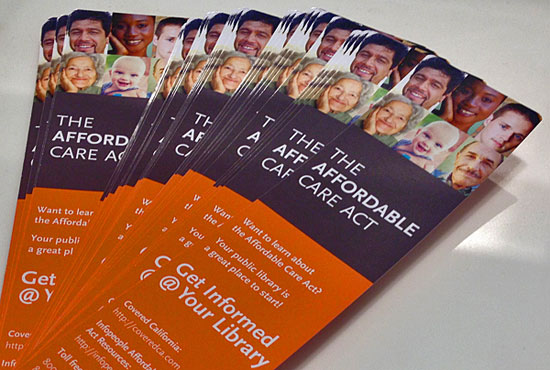
Affordable Care Act bookmarks are available at the info desk at the county's West Hollywood Library.
They don’t wear white coats or wield stethoscopes, but librarians have emerged as preferred providers, of sorts, in Los Angeles County’s massive mobilization to help thousands sign up for health insurance under the Affordable Care Act.
“They reach so many people, and they’re such a trusted source of information,” said Amy Luftig Viste, director of community partner programs for the county’s Department of Health Services. The department has turned to city and county librarians as key partners in a wide-ranging outreach effort that includes handing out brochures and specially printed informational bookmarks, answering basic questions and, at times, reaching out proactively to make sure patrons are aware of the new law and how it could affect them.
Librarians aren’t the only ones out there on the front lines. As the county seeks to draw the attention of hundreds of thousands of uninsured residents newly eligible for coverage under the Affordable Care Act, it has drafted a sometimes unexpected crew of surrogate messengers—ranging from the county Arts Commission to the L.A. City Taxicab Commission—to help get the word out.
The goal: making sure that everybody—even those who might not fit a stereotypical image of the uninsured—knows about their potential benefits under the law.
The health department has “proactively reached out to new populations including taxi drivers, artists, students and recently released jail inmates,” according to a recent report to the Board of Supervisors that also detailed efforts to train city and county librarians on the law.
“One of the challenges we always face is that there is a perception of what the uninsured look like, where the uninsured may live, all of those types of things,” said Tangerine Bingham, deputy director of managed care for the health department. “But we know that uninsured status is across the economic spectrum, and race, ethnicity, occupation.”
Breaking through to various groups and professional subcultures has meant getting creative in thinking about who might qualify for either the state’s new insurance exchange, Covered California, or for Medi-Cal, which is expanding under the new law to extend eligibility to 1.4 million additional Californians. So—beyond partnering with other county departments, such as the Department of Public Social Services—the health department has sought out associations with ties to specific populations, in effect leveraging the organizations’ credibility with their members.
Brochures are now posted at taxi operators’ dispatch centers throughout Los Angeles, and information has gone out to drivers via the mobile display terminals in their cabs. Artists, meanwhile, are being invited to the county Arts Commission on Dec. 5 for an explanatory seminar on “how to get affordable health insurance with the help of tax credits and federal subsidies.”
At libraries, the outreach is broader, building on a growing trend of libraries serving as community centers and repositories of information far beyond the encyclopedias in the reference section.
There are practical reasons for libraries, and librarians, to play a role now.
“We have public computers and we have free WiFi,” said County Librarian Margaret Donnellan Todd, who said librarians knew from the outset that they would be hit with public requests for information as soon as the law rolled out. “We have the ability to kind of navigate [patrons with health care questions] to where they need to be.”
Beyond that, Todd said, librarians enjoy broad public respect as honest and impartial brokers of information. “We don’t have any other motive,” she said.
That’s important, given the controversies surrounding the launch of the system nationally—including persistent glitches on the U.S. website, www.healthcare.gov. California’s exchange, Covered California, has largely escaped the criticism leveled at the national site, although concerns about cancelled policies have been raised here as well as elsewhere in the country. According to numbers released this week, California is leading the country in new enrollments under the law, representing one-third of all Americans who have signed up so far.
“Librarians are getting a lot of questions about the federal website,” Todd said. “But from what I understand, California’s website is in a lot better shape.”
Controversies notwithstanding, questions that library staffers have fielded from the public so far have tended to be fairly basic: “Should I do this? What’s it all about?” said Susan Broman, the county library system’s head of adult and digital services.
Sometimes, Todd said, librarians see the opportunity of reaching out proactively to patrons—like parents and caregivers in the Family Place early literacy program—to make sure they’re getting the information they need about health care reform.
It’s a win-win—for society and for library users of the future.
“Obviously, it’s a very good thing when families have insurance,” Todd said. “One of the things that helps a child get ready to read is a healthy body.”
Posted 11/15/13
Smoking out an LGBT foe
November 14, 2013
With gay men, lesbians and bisexuals firing up far more frequently than heterosexual Californians, health officials are moving to create effective anti-smoking campaigns to persuade LGBT smokers that quitting is smart, community-minded and even sexy.
One project, being rolled out by the Los Angeles County Department of Public Health later this month, plans to take an edgy “break up with tobacco” message into gay bars and clubs.
Meanwhile, the state has released an anti-smoking video aimed at the LGBT community. The video, which shows a couple of handsome young gay men leaving a bar together, doesn’t just target smoking—it also emphasizes the importance of saying no to second-hand smoke. When one of the men starts to light a cigarette outside the bar, the other gently pushes it away from his lips as a voice-over announcer says: “It’s time to speak up. We have to protect each other.”
Nationally, the Centers for Disease Control and Prevention have showcased a lesbian bartender in the widely-watched “Tips from Former Smokers” national tobacco education campaign. The ads feature real people discussing the painful and at-times disfiguring effects of tobacco. Ellie, the bartender, never smoked herself but started having asthma attacks after years of exposure to second-hand smoke on the job.
It’s not the first time that public health officials have tried to confront the problem. Several years ago, for instance, Los Angeles County provided grant funds to several clinics to conduct LGBT-oriented smoking cessation programs. That campaign’s tagline: “Learn how to quit smoking without being scared straight. (As if you could be.)”
But a strongly-entrenched LGBT smoking culture remains, even as overall smoking rates in California have dropped over the past three decades.
Statistics released in June by the state Department of Public Health’s Tobacco Control Program show that gays, lesbians and bisexuals are more than twice as likely to smoke as heterosexuals—27.4%, compared to 12.9%.
More than a quarter of gay men smoke, compared to 16% of straight men, the state found. Among lesbians, 24.4% smoke—a rate 2½ times that of heterosexual women.
What’s more, second-hand smoke is dangerously widespread. More than 40% of gays, lesbians and bisexuals reported that they sometimes allowed smoking in their homes, compared to 23.4% of heterosexuals. The state report draws on data collected in the California Adult Tobacco Study from 2005 to 2010 among self-identified gays, lesbians and bisexuals.
The reasons for the high smoking rates can be complex.
For one thing, stress can be higher in the LGBT community, sometimes compounded by issues associated with coming out or family disapproval, said Susan Cohen, health education consultant for the L.A. Gay & Lesbian Center. Perhaps even more powerful, she added, is a strong bar culture that fosters an “unfortunate partnering of cigarette smoking and alcohol,” even though indoor bar smoking is now outlawed in California.
Others note that while an overall culture of disapproval of smoking and second-hand smoke has grown in recent years, it’s been slower to take hold in the LGBT community, where tolerance is a strongly-held traditional value.
“They’re basically loath to tell other LGBTs what to do or not do…That’s what we believe is translating into a more live-and-let-live attitude toward second-hand smoke,” said Francisco Michel, a media specialist with the state Tobacco Control Program.
Another challenge is confronting tobacco industry advertising aimed at the LGBT community. While some have decried the targeting, others see it, oddly enough, as a sign of respect.
“Some folks say, ‘See, we’re just like any other market,’ ” Michel said.
That’s why health officials believe it’s important, and effective, to fight fire with fire, offering another story line—preferably one that is sophisticated and engaging—to offset Big Tobacco’s persuasive tactics.
“I do think we have to continue with counter-messaging,” said Cohen, of the Gay & Lesbian Center. “The tobacco industry spends billions to get us to smoke.”
Posted 10/31/13
A Sunset stroll
November 14, 2013
When it comes to challenging our car culture, massive events like CicLAvia, with its 100,000-plus cyclists, send a loud message about the growing momentum and demand for alternative transportation. But before there was CicLAvia, there was the more modest—but equally committed—Great Los Angeles Walk, which has been putting one foot after the next on L.A.’s most famous streets for the past 8 years.
Michael Schneider has organized the walks since 2006, when about 30 to 40 brave souls met to tackle all 16 miles of Wilshire Boulevard. Walkers now number around 300 each year.
“It always sounds daunting to people who haven’t done it before,” Schneider said. “But it’s not a race. It’s about taking your time and exploring. I come back with hundreds of photos of things that you normally miss.”
Taking a slower, closer look at L.A.’s street life is a motivating factor behind the walk, an outgrowth of local historic trips that Schneider used to organize. After Wilshire, the event sauntered along a new route each year, including Hollywood and Pico boulevards and Melrose Avenue.
On Saturday, November 23, the walk will take on that most iconic of L.A. thoroughfares, Sunset Boulevard. Schneider says the boulevard’s streetscapes have plenty to offer, from the boutiques and eateries of Silver Lake to the legendary night clubs of the Sunset Strip.
Walkers will embark at 9 a.m. from the “Lady of the Lake” statue in front of Echo Park Lake. They’ll follow Sunset westward to the edge of Beverly Hills before turning south on Whittier Drive to Wilshire, where they’ll head west to the statue of Saint Monica at Santa Monica Beach. “We’re going from statue to statue,” Schneider said.
The Great L.A. Walk has a very SoCal swagger. All comers are welcome, including dogs and kids, and they’re encouraged to break into groups, walk at their own pace and tackle as much or as little of the 17.8-mile route as they want. The event’s Twitter account will be updated throughout the day with the location of the group’s nucleus, should latecomers want to jump in along the way.
Walkers will be responsible for their own safety during the event, which takes place on sidewalks only. Getting there and back is also walkers’ responsibility; Schneider said many choose to take public transportation, while others join friends and station cars at each end of the route.
Those are the basics, but more is forthcoming on the Great L.A. Walk blog, where Schneider said he will announce an opening speaker, identify the location of an official after-party and add other details in the coming days. On the day of the walk, flyers with historical information and landmarks will be distributed.
With the holidays fast approaching, Schneider said, this might be a way get a head start on the gravy and pumpkin pie. “It’s a way to get out there and get some exercise,” he said, “before we gorge ourselves on Thanksgiving.”
Posted 11/14/13
County has designs on voting
November 13, 2013
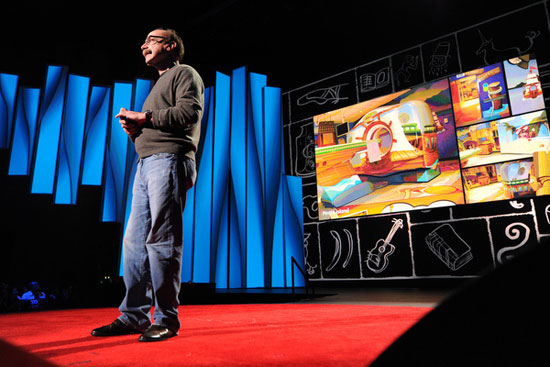
IDEO founder David Kelley has melded utility with elegance in his firm's designs for famous clients.
It’s not easy to re-imagine the largest voting system in the nation, but it doesn’t hurt to have the company behind stand-up toothpaste on your team.
For the past year or so, Los Angeles County has been working closely with IDEO, the innovative Bay Area design firm, to help with the county’s multi-faceted initiative to update its antiquated voting apparatus. The challenge is a big one: The county’s system serves some 4.8 million registered voters in 11 languages at some 5,000 polling places, and is currently using technology that dates, in some cases, to the 1960s.
So in an effort to think creatively about the future, the office of the Registrar-Recorder/County Clerk and the committees guiding the county’s Voting Systems Assessment Project reached out to a firm whose groundbreaking design work goes back to Apple’s first computer mouse in the 1980s.
“We wanted to focus on innovation, and we were attracted by their philosophy of design that’s human-centered,” says Efrain Escobedo, governmental and legislative affairs manager for the Registrar-Recorder/County Clerk’s office. IDEO, he says, studies “what the experience is underlying a project—whether it’s a filling station or a vegetable peeler—rather than just designing around what’s cheapest.”
Created as a merger of four design firms—one in Palo Alto, two in San Francisco and one in London—IDEO, which is now global, specializes in cutting-edge product and organizational design. One of its founders, David Kelley, was close friends with the late Apple co-founder Steve Jobs, whose elegant products became a computer industry standard. But IDEO’s work has run the gamut, from upright dispensers for Crest toothpaste to a rethinking of school lunches.
Initially, Escobedo says, the county learned about IDEO during an experiment with crowdsourcing in which the county put out a call for ideas on the future of voting through OpenIDEO, an online platform and community. But in early 2013, after conducting its own extensive data-gathering process, the county engaged the company’s consultants to help analyze the research under a series of short-term agreements worth about $1 million.
Among IDEO’s objectives is a rethinking of the traditional voting machines so they not only accommodate voters in a multiplicity of languages and settings, but are also universally accessible no matter the voter’s age, education, familiarity with the process or physical abilities.
“We’ve delivered three really, really rough concepts that we’re working now to whittle down into one,” says Sarah Rienhoff, IDEO’s public sector lead on the voting project. Visual renderings and mock-ups have ranged from boxy one-stop, hands-free voting stations to lightweight podium-like contraptions that can be easily moved around by poll workers and stored.
To augment data the county gathered, IDEO consultants examined on their own the extremes of the voting spectrum—newly naturalized citizens, older voters, young voters, people who had stopped voting and people with physical limitations that impacted their use of the existing system.
That last group was especially important, in part, because advocacy groups for the disabled have sued over issues such as the lack of touch-screens and the paper ballot requirement—mandates that, they contend, make voting harder and less private for visually-impaired voters.
So, Rienhoff says, the group put a special emphasis on disabled voters. One focus group brought county staffers nearly to tears as a man with cerebral palsy talked about the alienation of being shunted off to vote in a separate booth for handicapped people.
Another exercise took the form of an educational field trip.
“We did ‘dining in the dark’ at Opaque, a restaurant in Santa Monica where all the [servers are] visually impaired or blind and the customers eat in a fully dark dining room,” says Rienhoff, adding that they went back the next day to interview their waiter—one of more than 44 individual interviews they conducted last spring.
The IDEO group also studied lottery kiosks as an example of a system in which decision-making is paired with convenience and observed elections in Pasadena and Compton to compare voting in diverse communities.
What’s more, the firm’s creative approach served to inspire the Registrar-Recorder staff, Escobedo says. Among other things, they created an “idea wall” in the executive office in Norwalk after visiting IDEO’s workspace.
As the project’s self-imposed 2016 deadline approaches, some broad outlines have begun to take shape. For one thing, Escobedo says, it is clear that the new system won’t include voting via Internet or smart phone, at least for now, due to security concerns.
That, however, doesn’t preclude the possibility of the vote-by-mail option morphing someday into a scanned ballot sent by encrypted email, or a digital tablet onto which voters can electronically upload their pre-marked decisions. Also, look for bigger ballots, voting machines with universal design and hands-free access and possibly a voting process that revolves less around a single day at a single polling place than, say, a 2-week voting “window” or community voting centers.
“By the end of the year, we hope, we’ll have an actual final design concept that we can begin to engineer,” says Escobedo, who expects to start prototyping some time next year.
One aspect of the process is unlikely to change, however: That little “I Voted” sticker?
“Oh, that’s a mandatory do-not-leave-out,” laughed Escobedo. “People love that. It’s not going anywhere.”
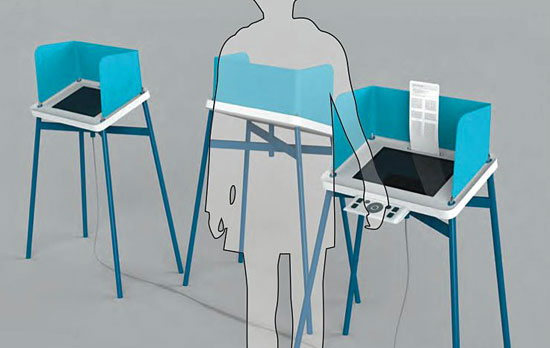
One possibility for future voters might be more portable voting machines, as seen in this IDEO rendering.
Posted 11/13/13
A beach for one and all
November 7, 2013
When it comes to reinforcing stereotypes of the California dream, few towns can match Manhattan Beach. Its finely-groomed sands draw scores of barely-clad stars of beach volleyball, including Olympic champions. Its waves are crowded with high-flying surfers and its shoreline bikeway is among the region’s most scenic.
But now, thanks to the persistence of a 90-something activist, the South Bay community is clearing the way for a new group of beachgoers to hit the sand, a group that’s certain to grow as baby boomers advance well into their senior years.
On Tuesday, the Board of Supervisors approved the drafting of an agreement between the city of Manhattan Beach and the county’s Department of Beaches and Harbors for the construction of a “Path to the Sea” that will provide access on the sand for people with disabilities.
Already, Santa Monica has two access ramps across the sand near the pier that stop short of the water, one made of wooden planks, the other of recycled tires. There’s also one that travels alongside the north jetty and at “Mothers Beach” in Marina del Rey.
But the permanent concrete path proposed for Manhattan Beach, which juts directly onto the sand, is the first of its kind for southern Los Angeles County-operated beaches. It will be located at the city’s northern end near the popular El Porto parking lot, where wheelchair ramps currently exist. From there, the 10-foot-wide path will extend 70 feet onto the beach, with a broad turnaround at the end, about 150 feet from the water’s edge.
The project represents an “a very interesting experiment” that poses challenges unmatched by other kinds of access for disabled people, said Chief Deputy Director Kerry Silverstrom of the Department of Beaches and Harbors. Foremost among those, she said, was determining how to construct a permanent path that won’t be undermined by eroding sand or damaged by tractors that drag the beach for trash.
“The beach is a natural resource that should benefit everybody,” Silverstrom said. “But it’s particularly complicated with urban beaches where a lot of grooming occurs…It’s hard enough to keep a bike path maintained. How do you keep these kinds of walkways maintained and free of sand for people who need them?”
Logistical questions like these kept the project on the drawing board for years, to the frustration of neighborhood activist Evelyn Fry, 98, the driving force behind the walkway, which will be constructed by Manhattan Beach, at an estimated cost of between $33,000 and $38,000, but cleaned daily by the county.
Fry, who is not herself disabled, championed the path as part of her active participation for decades in the civic life of the community, to which she moved in 1938. She could not be reached to discuss her latest success.
According to Manhattan Beach engineering technician Ish Medrano, Fry wanted the concrete path to extend to the shore’s edge. But that wasn’t possible, he said, because of the possibility of it being washed away by the surging sea. “I think she’s going to be a little disappointed,” Medrano said of Fry, who became so well known at City Hall that when she walked through the door “it was like an alarm going off: ‘Evelyn’s here!’”
Medrano described Fry as “the nicest woman” but “relentless” in her six-year crusade. “I think she’d like to see it completed before she passes away,” Medrano said, quickly adding: “She’s joked about that herself.”
Posted 11/7/13
Ramp Jam, R.I.P.
November 6, 2013
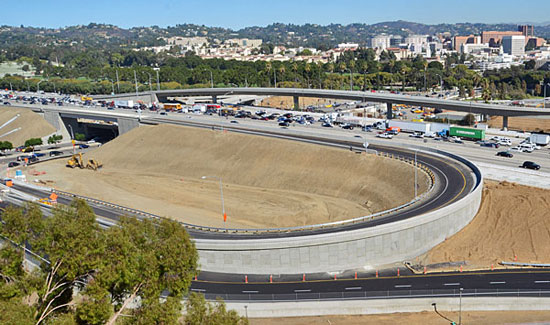
A view of the completed Wilshire interchange facing northeast, with the newest ramp in the foreground. All of the reconstructed ramps are open to the public as of Thursday. Photo/Metro
The long-running freeway ramp construction project at one of L.A.’s most notoriously jammed intersections is officially in the rear view mirror.
The reengineering and reconstruction of the Wilshire flyover ramps—one of the most visible and ambitious elements of the 405 Project—wraps up officially on Thursday, Nov. 7, with the reopening of the eastbound Wilshire onramp to the northbound freeway.
With that last piece in place, all of the new Wilshire ramps will be fully open for business—that’s right, the construction effort known variously as “Ramp Jam” or “The Rampture” is over. After getting started on June 22 of last year, the massive project-within-a-project is wrapping up 13 days ahead of schedule.
Michael Barbour, who manages the project for Metro, said traffic in the area should get better for locals and all drivers passing through.
“The most significant improvement to any one interchange in the entire project is right here,” Barbour said. “It’s going to bring an operational improvement across the board.”
Before the project, motorists frequently backed up on the I-405 and Wilshire and Sepulveda Boulevards as they waited to enter or exit the freeway. With the new configuration, the capacity of the on-ramps and off-ramps has been significantly increased. For example, the ramp that opens Thursday is 3,129 feet long—more than three times the length of the old one, which was built in the 1950s. That added space will accommodate more of the approximately 8,000 vehicles that take the ramp each day, getting them out of normal traffic lanes. Turning lanes have also been added on Wilshire and Sepulveda so vehicles can slow down to get on the freeway without slowing everyone else down as well.
The new intersection will improve safety, too, Barbour said, with fewer vehicles weaving through lanes to get on and off the freeway.
The early opening of one of the nation’s busiest intersections is a welcome development for a project that has been beset by delays and cost overruns. According to Metro, construction work is now 85% complete. Next up is one last ramp at Sunset Boulevard, which should be completed by the end of November. At that point, all permanent ramp closures for the entire project will be finished. Barbour also expects all bridge work to be completed by the end of this year.
However, some construction will continue into mid-2014. That includes work on the medians around Sunset and Getty Center Drive, and median work further north near Valley Vista Drive.
The project as a whole has brought massive disruptions and inconvenience to the lives of commuters and nearby residents—and Barbour is the first to acknowledge what they’ve gone through.
“There has been a lot of frustration,” Barbour said. “Everybody wants a wider, better freeway, but the residents have taken the brunt of the effort.”
Still, each step toward completion is a satisfying moment for Barbour—a chance to put the past behind and to begin harvesting the fruit of more than four years of hard work.
“It’s going to be much better operationally, and we’re expecting to see something more manageable for folks, so that’s good,” he said.
When fully complete, the 405 Project will deliver a new 10-mile northbound carpool lane, three rebuilt bridges, ramp improvements and other modernizations along the heavily traveled stretch between the 10 Freeway and the 101 Freeway.
Those interested in finding out more or providing feedback on the project can attend a community meeting this Thursday evening at 6 p.m. at the Westwood Recreation Center.
Posted 11/6/13
A cop’s cop
October 31, 2013
Daniel Sullivan wore his LAPD blues like the rest of the command staff, but he was definitely cut from a different cloth.
In an era when then-Chief Daryl F. Gates set a combative tone for the department, Sullivan, a deputy chief, refused to succumb to such them-against-us nonsense. That was evident in the unlikely relationship he and I forged.
Not long after my election to the Los Angeles City Council in the mid-1970s, I became the panel’s strongest critic of the department’s use of excessive force and its propensity for secretly building dossiers on perceived enemies, including me. Although Sullivan didn’t always agree with me, he said he respected my willingness to tackle the brass. And I, in turn, told him I respected the professional manner with which he and most of his colleagues performed their crucial and difficult responsibilities on behalf of the residents of Los Angeles.
With his jurisdiction stretching across my Westside district, Sullivan would become one of my “go-to” guys when I needed thoughtful and blunt guidance on a criminal justice issue. I’d go on ride-alongs with him until the wee hours to get his unique take on the city he patrolled. Then we’d compete on the racket ball court. He had a boyish, Irish grin straight out of Central Casting.
Many years ago, Sullivan and an LAPD colleague, Joe De Ladurantey, published a book called “Criminal Investigation Standards.” To this day, that volume sits on my shelf—a continuing reminder that you don’t have to be in lock-step with a person to form lasting professional and personal ties, if the relationship is grounded in mutual good will.
As you may have suspected, I’m writing about Sullivan because I learned last week that he passed away.
The last time I talked to him was not long after the 9/11 attacks, years after his retirement. He called me from, of all places, Pakistan. He said he’d been hired by the U.S. government for a border security and police modernization project to help that nation secure its borders. Then I lost touch; I heard he moved to Palm Desert and was easing his way into retirement.
One of the LAPD’s brightest stars, Sullivan had the policing and political skills to become chief of police one day. Only a quirk of timing and the lack of a vacancy prevented that from happening during his years within the department. What a shame. He was the closest friend I had in the LAPD, and I will miss him and what our friendship represented.
Posted 10/31/13
Support floods the L.A. River
October 31, 2013
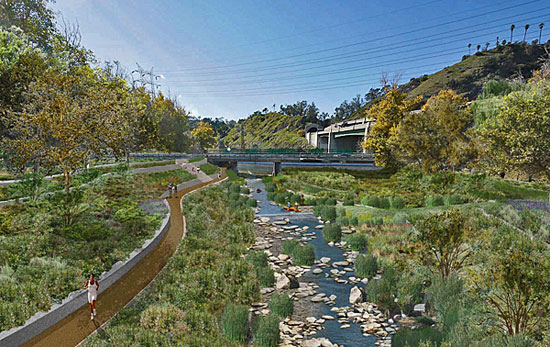
A greener Los Angeles River, as depicted in this rendering, is on the way under federal financing plans.
The Los Angeles River is getting a lot of love these days. The infamous concrete channel that’s been likened to a scar on Los Angeles’ civic psyche is now on the front burner to receive major improvements, and it’s got a lot of political muscle in its corner.
On Tuesday, as Mayor Eric Garcetti led a contingent of city officials and activists to rally support in Washington D.C. for a massive project to restore the river’s natural habitat and create more open space for the public, the L.A. County Board of Supervisors waded into the effort from a continent away.
Acting on a motion by Supervisor Gloria Molina, the Board voted 3-0 to back Alternative 20 of the Los Angeles River Ecosystem Restoration Feasibility Study, and to send a letter of support to federal agencies, President Barack Obama and the Los Angeles Congressional delegation. Supervisors Michael D. Antonovich and Don Knabe abstained from the vote. Alternative 20 is the most sweeping of four alternatives reviewed in the study—which was commissioned by the United States Army Corps of Engineers—and it comes with a $1 billion price tag that would be shared by the City of L.A. and the federal government.
Lewis MacAdams, president of Friends of the Los Angeles River, a non-profit group dedicated to restoring the waterway, said the Supervisors’ move adds much-needed momentum to the cause.
“It makes it clear on every level that the people of Los Angeles want to see the restoration of the river to the largest possible scale,” MacAdams said. “What you’re seeing from the Board of Supervisors is a commitment to the restoration of the river from the area’s most powerful political body.”
When the Corps released its study on plans to restore 11 miles of the river between Griffith Park and downtown L.A. last month, the long-awaited report met with a lukewarm reception. Of the four alternatives analyzed, the Corps tentatively recommended Alternative 13, the second-least-extensive option. It would restore 588 acres of habitat and create four miles of new trails, three new restrooms and five wildlife viewing areas. But MacAdams said that, while those improvements are welcomed, the $453-million plan still wouldn’t do L.A.’s waterway justice.
“The Corps wants to get out on the cheap, so they aren’t even paying attention to their own study,” MacAdams said. “Alternative 13 only restores minimal habitat.”
But MacAdams is optimistic about getting something better. He said the growing list of supporters for a larger project now includes U.S. Senators Barbara Boxer and Dianne Feinstein, along with local members of the House of Representatives and Minority Leader Nancy Pelosi. But while Mayor Garcetti and other supporters are pushing for Alternative 20, the project faces an uphill battle in Congress, where budgetary constraints and partisan gridlock are the order of the day. On Tuesday, Feinstein acknowledged that it may be necessary to find a middle ground. (Another option in the feasibility study, Alternative 16, splits the difference between the two plans—including some, but not all, of the improvements for a price tag of $840 million.)
“Even if we don’t get what we want and have to settle for [Alternative] 13 or 16, it begins to take back the river, and that’s a journey that’s going to take a long time,” MacAdams said.
The L.A. River was encased in concrete after repeated flooding devastated parts of the city in the early part of the 20th century. The massive project stopped the flooding, but also destroyed miles of habitat and transformed the river into an eyesore, driving local residents from its banks and making it the butt of jokes on a national level.
In recent years, interest in revitalizing the river has surged. In 2010, the Environmental Protection Agency declared it a “navigable waterway,” paving the way for enforcement of the Clean Water Act within its 834-square-mile watershed. And just this past summer, a kayaking pilot program experimented with literally navigating the river.
All three options under consideration would return 13 currently-underground streams to the surface, create new habitat and restore, at least partially, three adjacent properties—Taylor Yard, Piggyback Yard and Pollywog Parcel. Alternatives 16 and 20 also would add terracing along stretches of the riverbank, remove some of the concrete and create new wetlands. However, only Alternative 20 would connect the river to L.A. State Historic Park, bring large-scale restoration to the river’s confluence with the Verdugo Wash and widen part of the river bed.
For the county, Alternative 20 would be a big help in managing the watershed, said Mark Pestrella, an assistant director for the Department of Public Works. While the Army Corps is tasked with taking care of the stretch of river where the project would occur, the county Flood Control District manages other sections of the waterway. Bringing more people to the river would induce them to help take care of it and support its continued improvement, Pestrella said. The restoration project would join an ongoing evolution of the urban river that stretches back to the 1980s and includes the 1992 Los Angeles River Master Plan, the first study to take a comprehensive look at the entire length of the river to look for opportunities for recreation, restoration of habitat and creation of open space.
“We are midstream—the County sees this as the next step,” Pestrella said. “We’ve done hundreds of millions of dollars in L.A. River Master Plan improvements already.”
Because Alternative 20 adds new park space and improves connections to neighboring communities, county officials and other supporters say it would draw more people seeking recreation opportunities.
“Until people actually reach out and touch the environment and nature, they don’t know what they don’t have,” Pestrella said. “Once people make an investment in it that improves their life, they just want more of it. We’re funded by the public so we need that buying in—we need people to turn toward the river.”
Posted 10/31/13
Code busters beware
October 29, 2013
Dusan Pavlovic is making a real nuisance of himself.
As a member of the Los Angeles County Counsel’s office, it’s his singular mission to make life difficult for people who violate Los Angeles County’s public nuisance codes for everything from operating neighborhood drug houses to building structures without permits to running raves in warehouses rented under false pretenses.
Then there’s the downright creepy.
“We found one house that had concrete prison-style cells underneath,” Deputy County Counsel Pavlovic recalled. “The owner said he constructed it as a bomb shelter but the Sheriff’s Department suspected it may have been used to keep undocumented immigrants.”
On Tuesday, the Board of Supervisors gave Pavlovic and his small code-enforcement unit a much-needed boost in their “nuisance abatement” efforts for Los Angeles County’s unincorporated areas: a new ordinance that, for the first time, allows the county to collect daily fines, attorney’s fees and administrative costs.
“When you hit them in the pocket book, that’s where it hurts,” Pavlovic said. “They’re more attentive to the problem.”
Pavlovic, who has led the enforcement team since its creation eight years ago, said the existing public nuisance law needed toughening because violators had little to fear, given the unlikelihood of judges giving jail time for most code transgressions.
“You’d be surprised how many times people choose to ignore the issue,” explained Pavlovic, who pushed hard for the stiffer penalties. “They tell us, ‘Do what you want.’ Now we will.”
The ordinance, which has been on the books for decades, bans property uses that are “detrimental to the community’s tranquility and security.” Those include activities that, according to the law, “endanger public health, safety and welfare, invite crime, reduce property values, degrade the environment and negatively impact the quality of life of the residents.”
Pavlovic said he’s seen—and heard—it all out there since joining the county counsel’s office in 2005. “I tell you, these people get pretty creative,” he said.
For example, there was a property owner in Topanga Canyon, who, for reasons that remain unclear, perched an automobile on the roof of his carport. Rather than remove the vehicle as ordered by the county, the violator, according to Pavlovic, “just took a couple of plywood boards and enclosed the car so it was no longer visible. He said, ‘You see, it’s no longer there.”
Some violators, on the other hand, are so open about their entrepreneurial misdeeds that they practically invite neighbors to drop a dime on them. Take the case of an East Compton man who was running an illegal “chop shop” at his home. Pavlovic said the man not only was dismantling cars but was then selling parts in the front yard.
“Residents kept complaining, and he kept dismantling,” Pavlovic said.
Pavlovic said he doesn’t want to sound like a cliché but that he’s committed to “improving the quality of our neighborhoods and eliminating these public nuisances.”
“We’ve all been in situations where we’ve had a bad neighbor,” he added. “I think that’s something every person can relate to.”
Posted 10/29/13




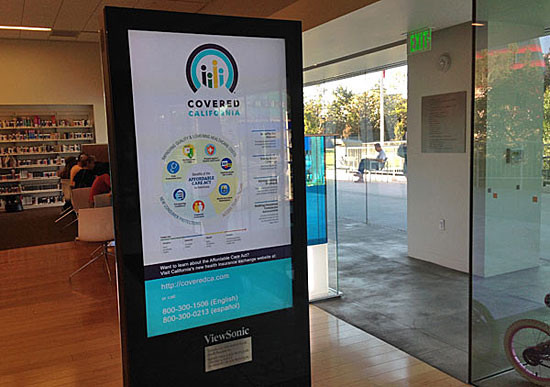
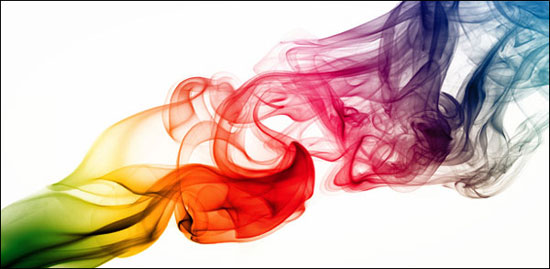
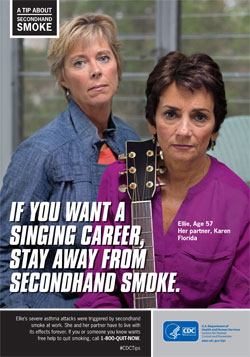
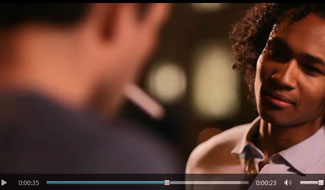
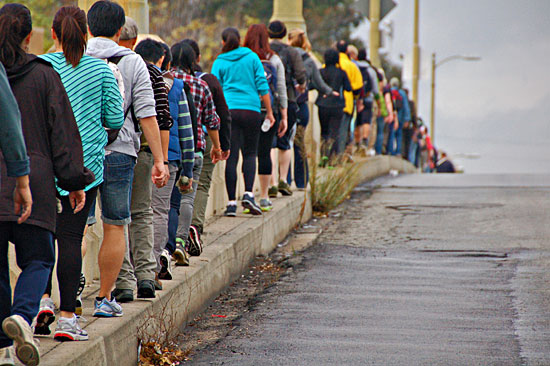
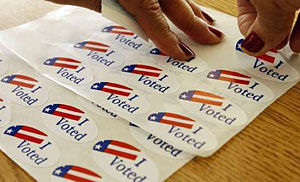
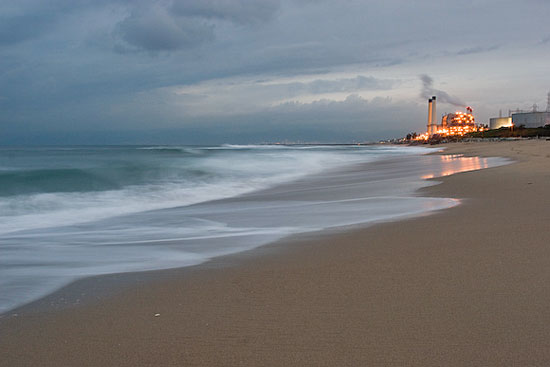
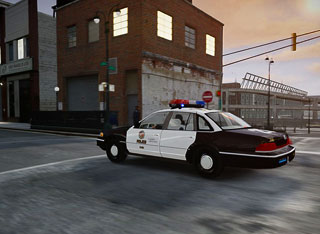
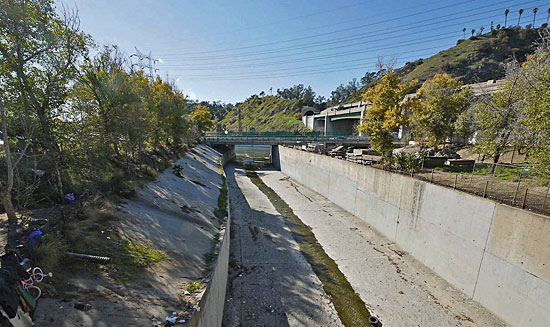
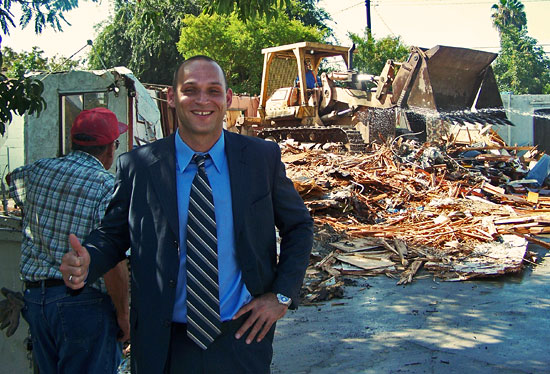





 Check for the latest closure information
Check for the latest closure information








